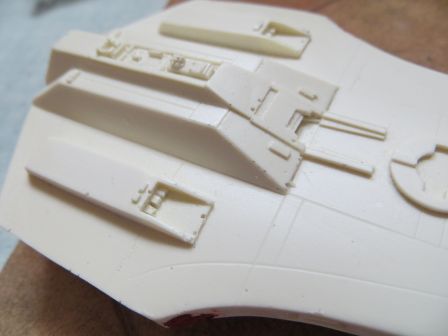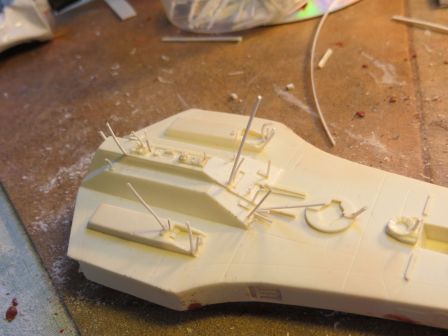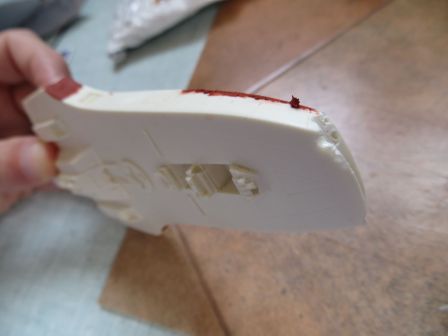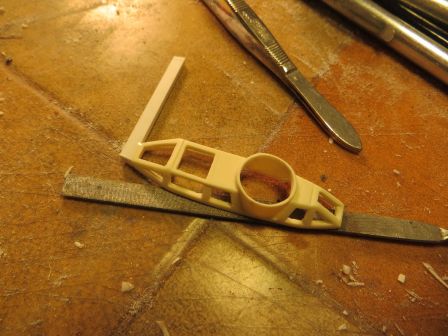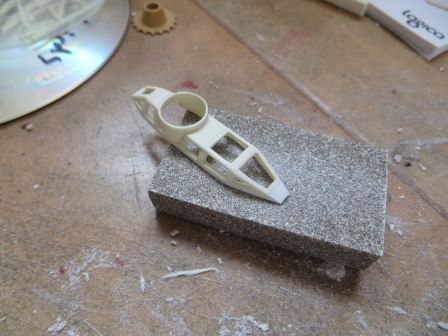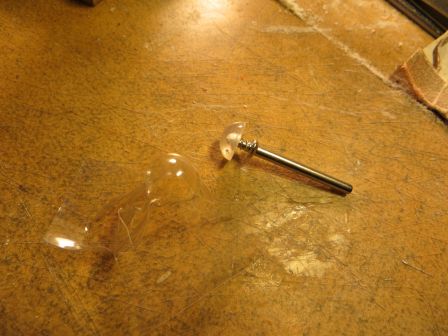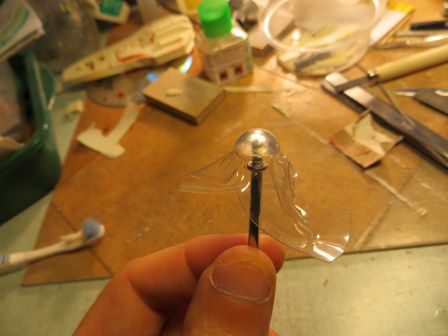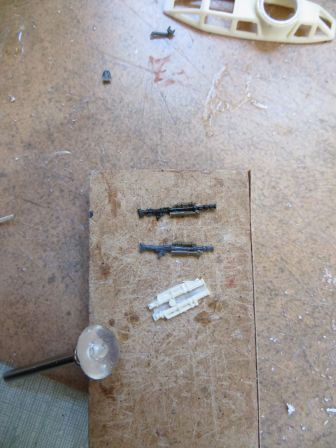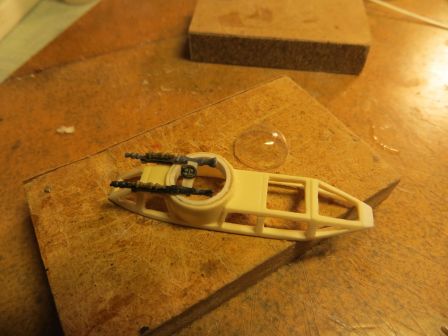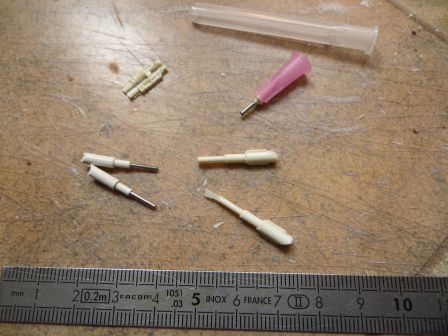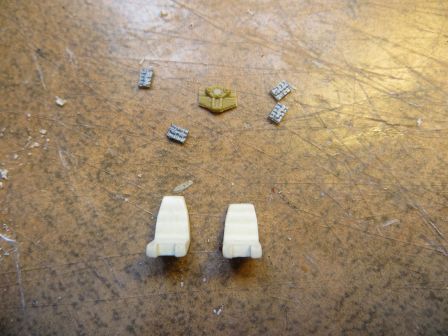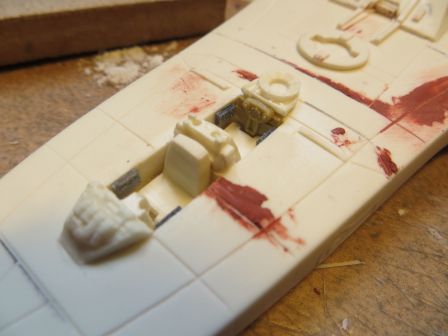Y-Wing Clone Wars - Cleaning and detailing
Par olcabour le vendredi, 15 février 2013, 23:56 - Y-Wing Clone Wars - Lien permanent
As I said, first cleanings on the cabin revealed many bubbles and micro-bubbles hidden beneath the surface.
The bubbles are filled with small plastic rods glued with superglue. For micro bubbles, mastic is rarely effective, so I mixed it with extra fluid Tamiya glue.
The accumulation of bubbles on the nose resulting in large lacks, that I filled with resin offcuts and plastic profiles.
The canopy required a serious trimming. As I thought that the front was ended too abruptly, and seemed a bit short compared to the references available, I lengthened it with a piece of plastic profile. It allowed me to then extend the windshield, and make slimmer the frames.
The panels lines are replaced and corrected here or there. Engines requires the same job as the fuselage: filling bubbles and gaps, graving, etc.. In the nozzles, the small directional fins are quite thin (a good point), but still need serious cleanings. For cons, the space behind is empty and clearly viewable. So, I detailed this area with a AFV wheel (for an 1/48 Panther) to simulate the nozzle. I did not try to be accurate here, just stay in the spirit of classical y-wing.
The turret canopy supplied in the kit is casted in full and transparent resin. So, this is finally more translucent and makes a horrible magnifying effect. I thermoformed a new bubble with the help of the resin part as a master, and some transparent plastic card heated over a candle.
The turret guns are incomplete, only molded on one side, and not long enough to be properly set in place. By the way, as I made a new bubble canopy, the internal mechanism needed to be completed. They are scratched with machine guns and suspension shafts 1/72 military kits.
The 2 front guns are really ugly, and not cylindrical. So I scratched new ones with plastic tubes and syringe needles.
Next is a little ride in the cockpit, where the side panels are simulated with 1/72 AFV tracks, and the gunner's instrument panel with a suspension part from a Italian AFV in the same scale. Incidentally, the backs of the pilot and gunner chairs needed to be shortened as the canopy could not be close on the cabin ...
The main assembly can now begin. Since there are not many parts, and engines will stay aside for easy painting, this step is rather fast ! It is essentially to ensure proper alignment and prepare metal rods to ensure proper bonding.
